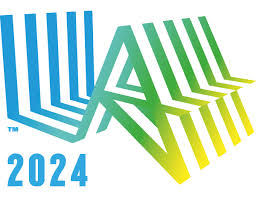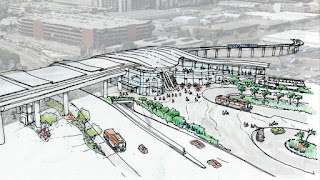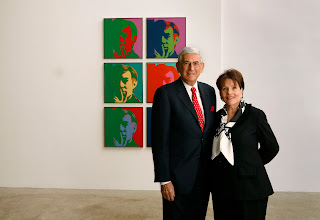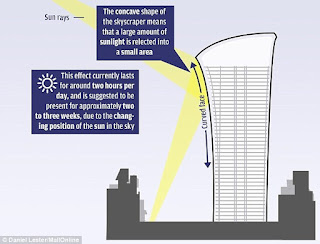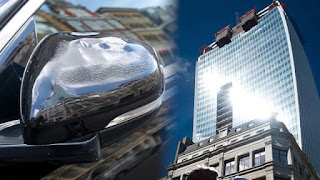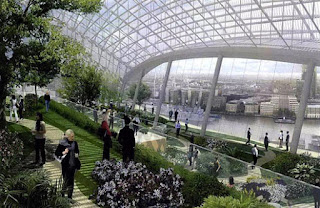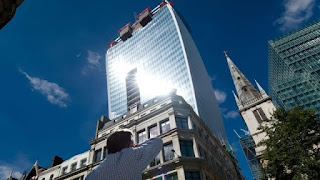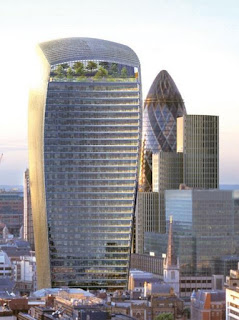http://www.alternet.org
 |
Lucas Oil Stadium
Indianapolis, Indiana
stadiumofprofootball.com |
Hello Everyone:
Let begin the week with an apology for the shortage of posts last week. Blogger had to take off a chunk of time for personal reasons but it is a new week, which means fresh posts. Starting off the week is a look at how Black communities, wrecked by publicly funded stadiums scams are fighting back.
Sports stadiums are glamourous revenue generating assets to their host cities. Anna Simonton writes in her article for
Alternet, "Black Communities Destroyed By Publicly Funded Stadium Swindles Are Fighting Back In A New Era Of Development, "Since the early twentieth century taxpayers have footed the bill for private development in the form of sports stadiums, arena, and other mega-event facilities." Specifically, according to the sports news website
http://www.deadspin.com,
61 percent of the billions of dollars spent stadium construction between 1909 and 2012 came from public coffers. That is is huge chunk of public money going towards facilities that largely remain empty throughout most of the year.
 |
PPL Park
Chester, Pennsylvania
stadiumsusa.com |
The consensus among economists is that the public rarely benefits from these enormous and enormously expensive investments, "...despite persistent claims by politicians and heads of chambers of commerce that stadiums and their ilk generate economic growth." For example, $720 million Lucas Oil Field in Indianapolis, Indiana. The home of the National Football League's Indianapolis Colt was built in a city with mounting debt in the hundreds of millions-instead of created the hoped for $2.25 billion in economic growth and 4,200 jobs back in 2004. Another example is PPL Park in Chester, Pennsylvania. Chester is a city "where 33 percent of the population is below the poverty level but public funds were used to finance 97 percent of $122 million soccer stadium that has yet to transform Chester..." Detroit, whose civic government cannot afford to pay public employee pensions or maintain its infrastructure, yet can afford a sparkling brand new $261.5 million hockey arena. The ironies abound.
 |
Turner Field
Atlanta, Georgia
atlanta.braves.mlb.com |
There are mountains of research and reporting that confirm the fact that these gleaming projects fail to deliver the promise of positive economic growth. However, less attention is paid to the more far-reaching negative effects these white elephants. The city of Atlanta, Georgia is the perfect case study. Atlanta has four stadiums: two for baseball and two for football. Neither stadium has actually generated economic development for their host neighborhoods. In fact, they have significantly contributed to the "de-development of what was once thriving middle and working class Black communities." Presently, Turner Field is scheduled for redevelopment and the resident are determined not let de-development repeat itself.
 |
Toby Sexton Tires
Mechanicsville, Atlanta, Georgia
markwolfe.com |
Mechanicsville was a flourishing Black neighborhood in Atlanta. Long-time resident Doristine Samuels remembers has fond memories of the neighborhood, before it become a desolate food desert stuck between an interstate system and a baseball park. Ms. Samuels told Ms. Simonton,
We only had one house key and we would keep it under the living room rug. We would come home and nothing was changed, nobody would steal anything.
The residents took care of each other in Mechanicsville, a community established by railroad workers, south of downtown Atlanta, following the Civil War. One of the reasons they were tightly knit was they barely had a reason to leave. Mechanicsville had numerous stores, libraries, schools, a hospital, a movie theater, and many other imaginable amenities. However,
When the Braves came, all that changed, according to Ms. Samuels.
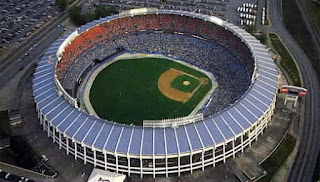 |
Atlanta-Fulton County Stadium
Atlanta, Georgia
doughanna.com |
In 1965, then-Atlanta Mayor Ivan Allan Jr. brought the former Boston Braves to Atlanta, fulling a campaign promise to bring a baseball team to the city. It was also the year that construction was completed on the Atlanta-Fulton County Stadium, the home of the Braves. The project cost $18 million, paid for with parks and recreation tax dollars; built on land seized from owners through a federal urban renewal program. Construction of the stadium also destroyed an entire neighborhood adjacent to Mechanicsville and part of still-existing Summerhill neighborhood. Coupled with the new stadium was the simultaneous construction of an interstate which displaced thousands families from these mostly Black communities south of downtown.
 |
Summerhill Riots
Summerhill, Atlanta, Georgia
album.atlantahistorycenter.com |
In total, these projects razed over 10,000 more homes than they replaced. Geoff Heard, a long-time Summerhill resident told Ms. Simonton,
With no housing the people went different places and businesses began to fail and move on out. To give you some sense of just how much of a negative impact the construction of Atlanta-Fulton County Stadium and the interstate had, Ms. Simonton writes, "In 1940 the area had a population of 32, 248. By 2011 that number had shrunk to 5,409."
(http://blog.library.gsu.edu/2013/11/14/home-a-density-populated-neighborhood-became-turner-field-a-map-essay) Not only did businesses shutter their doors, schools lost students and closed, churches moved taking their social services with them, and transportation became a stumbling block for families trapped by the stadium and interstate. All of these factors combined to send Mechanicsville and the other neighborhoods surrounding the stadium into an economic free fall.
 |
Georgia World Congress Center
Atlanta, Georgia
en.wikipedia.org |
The wholesale demolition of Black neighborhoods continued elsewhere in the Atlanta area. The World Congress Center was built in 1976; expanded in 1992 to include a stadium for the NFL's Atlanta Falcons. The $214 million complex, known as the Georgia Dome, was entirely publicly funded. One of the host neighborhoods was Vine City, the former home of Alonzo Herndon, the first Black millionaire in the United States. Civil Rights leader Martin Luther King Jr. once lived in Vine City and frequently held held strategy meetings with other movement leaders at a local restaurant. Anna Simonton writes, "Like the neighborhoods south of downtown, those on the west side were economically stable and culturally vibrant."
 |
Martin Luther King and Coretta King walking through Vine City
1966
100resilientcities.org |
However, between 1970 and 2000, the neighborhood lost two-thirds of its residents. The only thriving business remaining in the neighborhood is the illegal drug trade. To give you some indication of how booming the drug trade is, a corner of Vine City-The Bluff-is the heroin capital of the world. Given this history of spending boondoggles, convincing the working class African-American communities the merits of a new stadium. When Atlanta won the right to host the 1996 Summer Olympic Games, the city proposed to build yet another stadium, next to the Brave's stadium south of downtown.
 |
Centennial Olympic Stadium
Atlanta, Georgia
inglett-stubbs.com |
Anna Simonton writes, "The Centennial Olympic Stadium plan called for even more land to be cleared of homes and businesses. When the games were over, the original stadium would be demolished and turned into a parking lot, while the Braves would move to the new stadium, rechristened Turner Field." Columbus Ward, who was key in organizing Atlanta Neighborhoods United For Fairness (A'NUFF) told Ms. Simonton,
The government has been a part of the destruction of these neighborhoods, and there they were with the Atlanta Committee for the Olympic Games doing more of the same. The group was was able to gain concession from the Olympic planners.
Like Ms. Samuels and Mr. Heard, Mr. Ward has lived most of his life in the neighborhoods around the stadium. A'NUFF was able to save a school and a hospice from the wrecking ball and force the city into an agreement to repair the sewer systems and using local labor. The new $207 million stadium was paid for entirely from private Olympic funds, however, an additional $30 million in capital improvements required for the projects were drawn from federal and city funds. Further, the City of Atlanta agreed to pay for future construction and maintenance costs that could total $60 million.
 |
Georgia Dome
Atlanta, Georgia
musicforall.org |
Despite some of the neighborhood success prior to the Olympics, Ms. Simonton writes, "Turner Field's legacy has been one of further economic devastation." Once construction was completed, many of the residents were displaced by landlords who found it more profitable to evict the families, tear down the buildings, and convert the empty lots into makeshift parking lots. Once the construction jobs dried up, the only sources of employment available were low-paying service jobs.
This is something that Doristine Samuels is all too familiar with having worked twenty years as a security guard at Turner Field. For nearly twenty years she does not earn a living wage nor does she receive any benefits. What does twenty years of being on the job get her...free parking. Yours truly knows what you all are thinking: no living wage, no benefits, no retirement plan, and no paid vacation?! Just free parking?! Insane, right? Of course, if Ms. Samuels earns a good review from a secret shopper, she have her picture taken with a baseball player. Like Ms. Samuels, yours truly would rather have the bonuses.
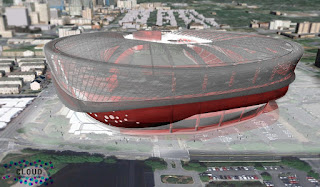 |
Proposed new Georgia Dome
Atlanta, Georgia
saturdaydownsouth.com |
The new stadium construction madness continues. Ms. Simonton reports, "A similar second coming of stadium development is playing out in Vine City. In 2013 the Atlanta City Council approved $200 million in construction bonds for a new $1.2 billion football stadium with a retractable roof, situated directly next to the Falcons' original stadium..." Neil deMause, the writer of the enlightening
Field of Schemes, "...estimated that the total public expense would amout to $554 million."
(http://www/fieldofschemes.com) Absurd, right?
 |
Morris Brown College
Atlanta, Georgia
hiphopwired.com |
However, there is a sliver of a silver lining in all this stadia madness. Ms. Simonton reports, "Neighborhood organizations won a $30 million Community Benefits Agreements, but rather than designating the money for a specific use, the deal set up two $15 million funds-one controlled by the city's development agency, the other by Home Depot founder and Falcons owner Arthur Blank." The bottom line is that neighborhood organizations
can apply for grants from the funds,
but have no say over how the money is used. A silver lining with a some tarnish. One early casualty of the proposed stadium was a 108-year-old church
(http://www.nytimes.com) established by former slaves. Another local landmark facing an uncertain future is the Historically Black College Morris Brown, were W.E.B. DuBois taught. The school already escaped bankruptcy earlier this year by selling most of the campus to the city, which has yet announce redevelopment plans.
 |
Map of Georgia highlighting Cobb County
atlantahomesellers.com |
Anna Simonton spoke with Georgia Institute of Technology urban studies professor Larry Keating to get his thoughts on the insanely repetitious cycle of development by destruction. Prof. Keating credited it to , "...generations of elected officials submitting to corporate control, with little to no consideration for the lives of working and middle class people. Specifically, In Prof. Keating's 2001 book
Atlanta: Race, Class, and Urban Expansion, he writes,
Almost all the important policy decisions that have guided the city over the past several decades have been made not by government itself but by small groups of men-sometimes just two men-in private meetings...What planning the government elite has engaged in has been ad hoc and superficial. City leaders have generally been reluctant to give careful consideration to the broader effects...
Columbus Ward adds,
This stuff has been going on for fifty years and it's meant the destruction of low-income, African American neighborhoods in this city. You'd think by now they would would want to do it right especially with all the Black we've had.
 |
Rendering of proposed Turner Field development
blogs.cresa.com |
Presently, Turner Field is in phase three of redevelopment, under the same conditions. In 2013, the Major League Baseball team Atlanta Braves announced they would be moving to Cobb County, north of Atlanta, by the 2017 season. To keep the Braves from fleeing the city, civic officials struck a back room deal with the team to build a new stadium using $450 million in public funds. Never mind the fact that the county had just fired 182 teachers, citing budget reasons.
(http://thinkprogress.org) Anna Simonton writes, "The Braves' announcement threw the future of Turner Field and the surrounding neighborhoods into a limbo full of both possibility and uncertainty. Neighbors began to mobilize, and so did the developers. From the get-go, Atlanta Mayor Kasim Reed has been two-timing between them."
 |
Rendering of proposed Inglewood Stadium
Inglewood, California
wavenewspapers.com |
By now, you might have concluded that new stadium construction is a mindlessly ridiculous proposition. The evidence suggests that there are limited short-term positive economic benefits and almost no long-term positive benefits. Yet cities, such as Inglewood, California, are still seduced by the promise of increased economic development these gleaming state-of-the-art stadia hold. Perhaps, Mayor James T. Butts and his administration would be best advised to seriously consider all the factors of building a new football stadium before ground is broken. As we have seen, development by demolition destroys historic neighborhoods and uproots long-term residents. Inglewood is a historically working and middle class city that would be irrevocably altered-perhaps for the better or perhaps for the worse. Either way, the City of Inglewood must carefully address its citizens's concerns over the proposed development and perhaps, try to enter into some public-private funding agreement with whichever NFL decides to call Los Angeles home rather than strictly rely on public funds. Atlanta has not learned this lesson but Inglewood has the chance to do better.
Yours truly would highly recommend you click on the article link at the top of the post and check out the citations used by Anna Simonton's well done article. This is a subject that has implications for other down-market cities looking to entice a sports franchise to come to their city or keep the one they have now.



























